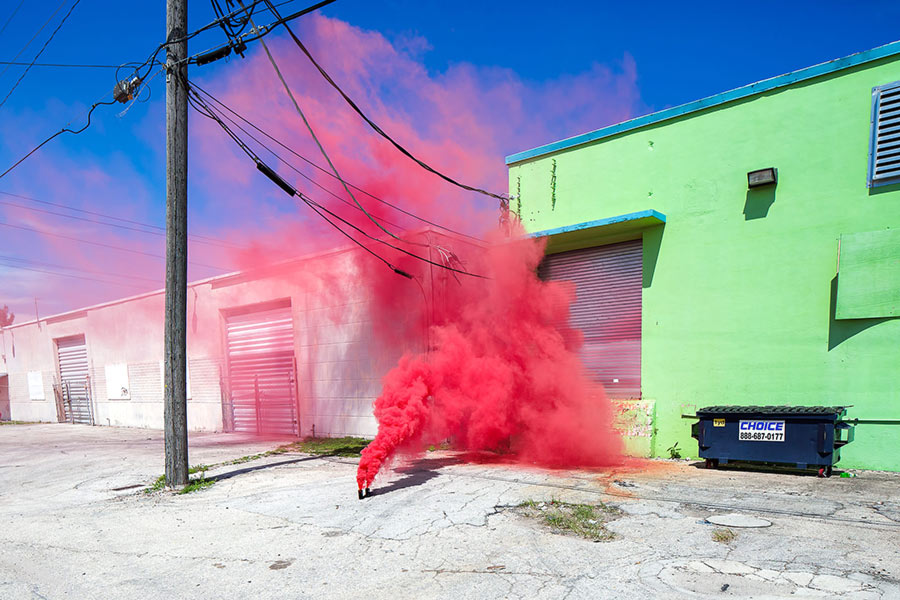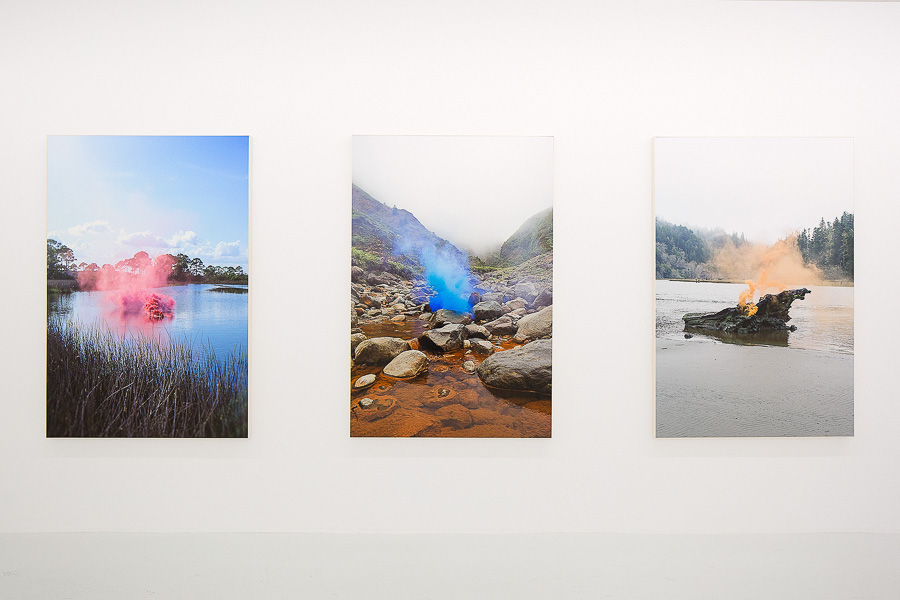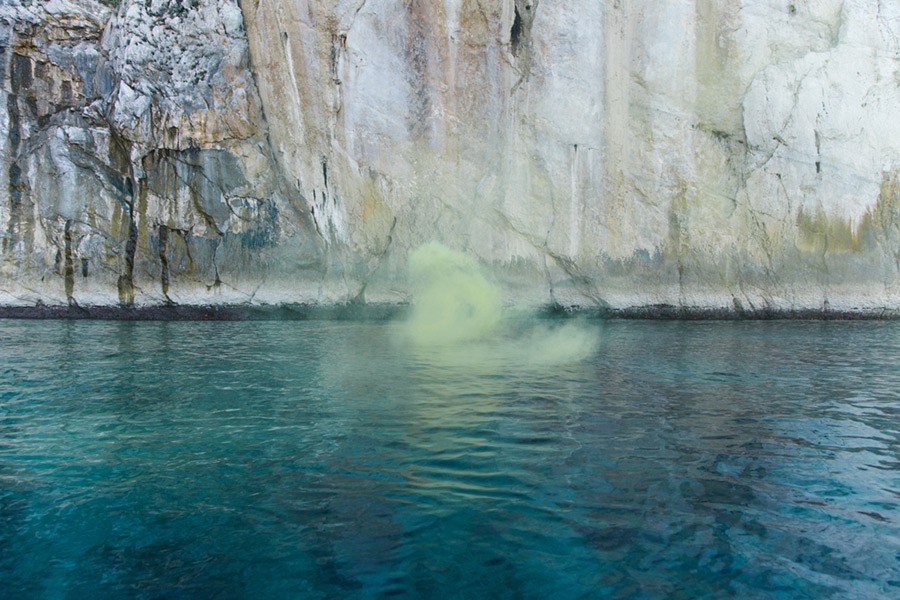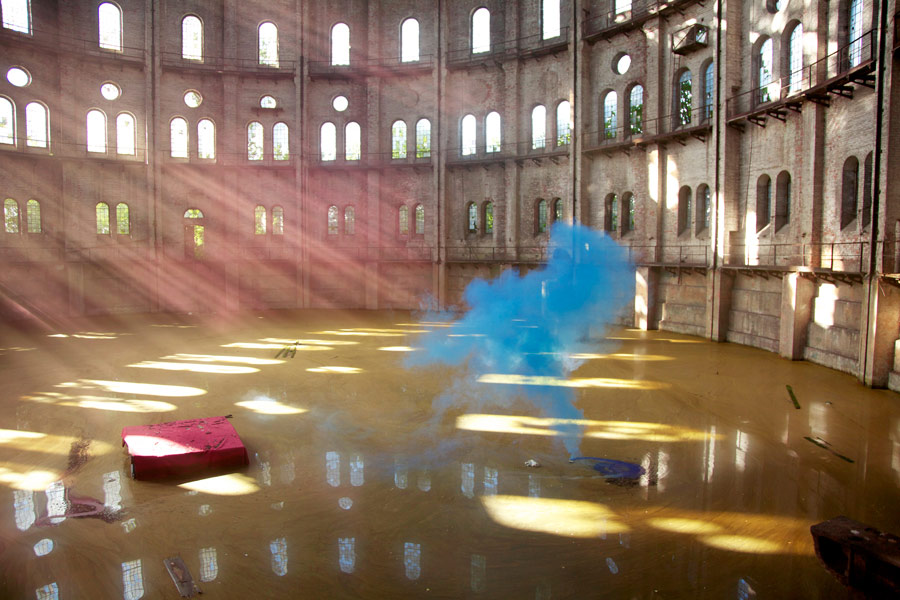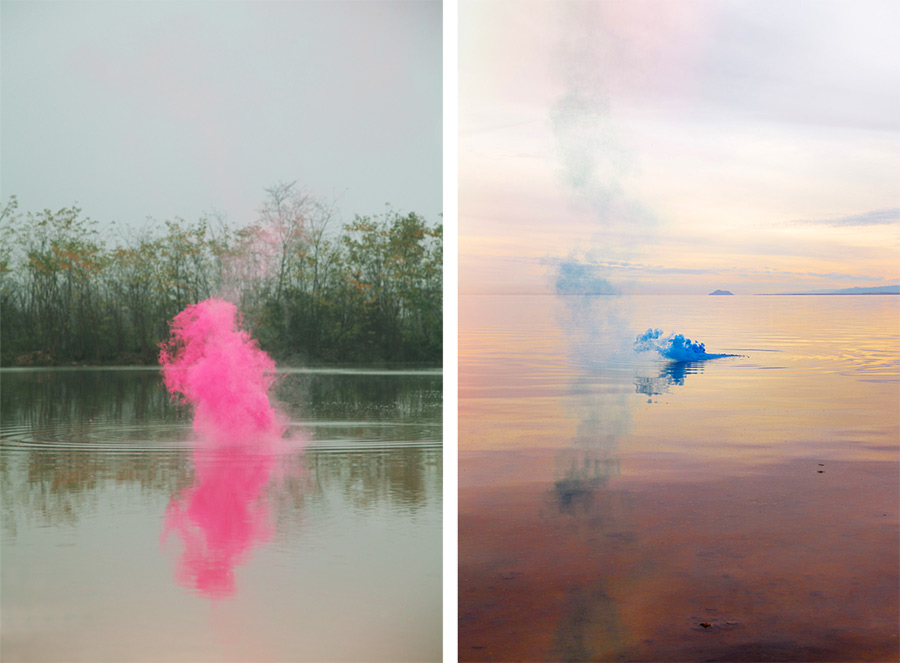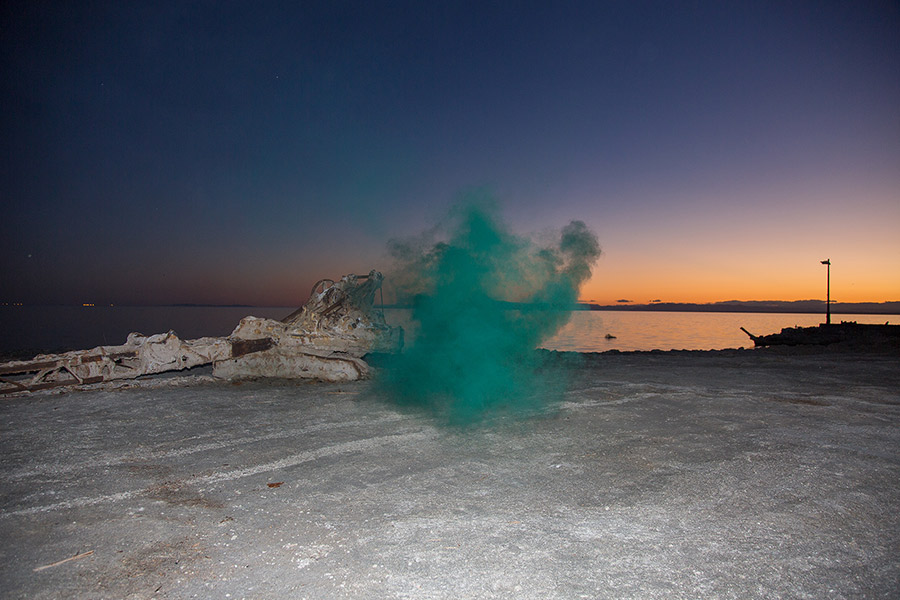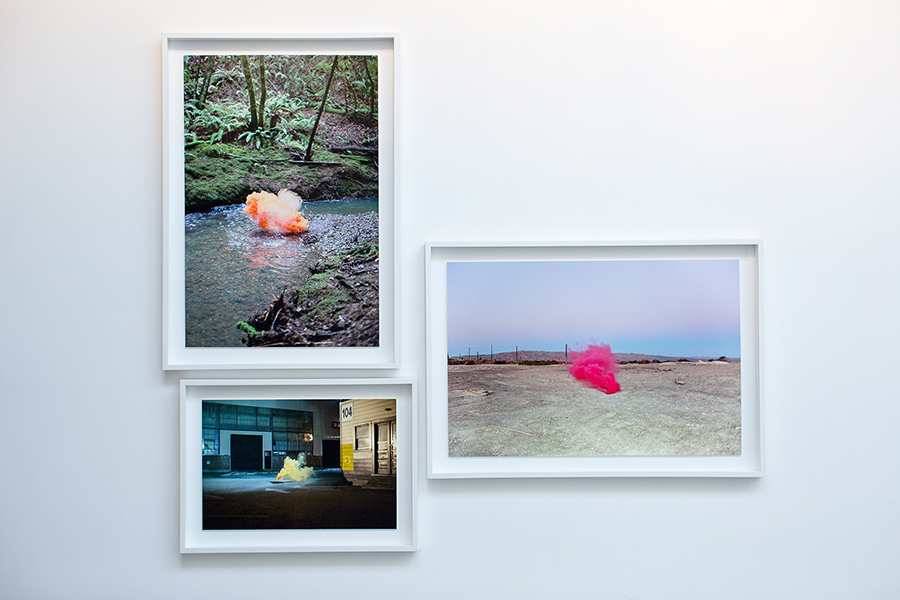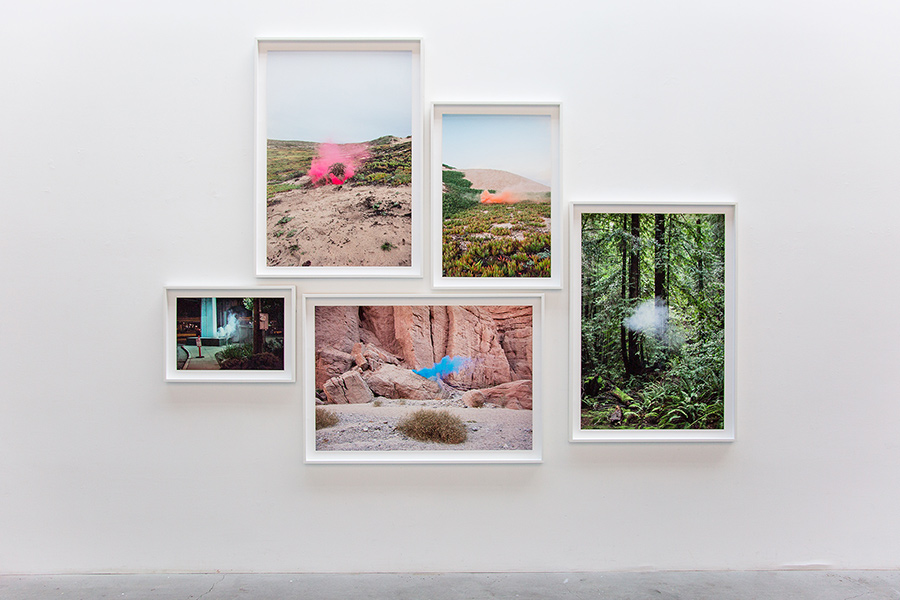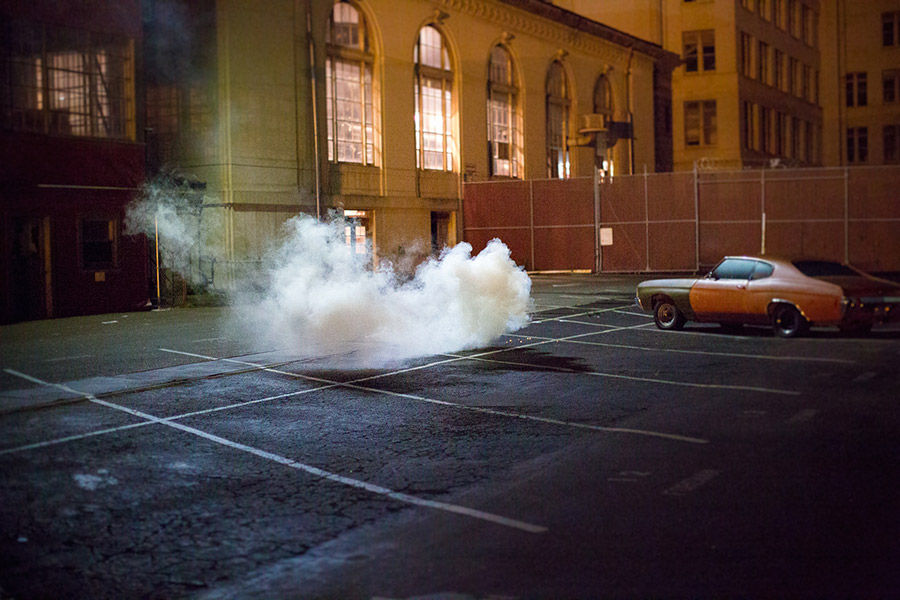Silence Shapes
YEAR
2009
ongoing
SUPPORTED – EXHIBITED
Somerset House – London, UK
Fundacíon Loewe – Madrid, SP
Opera National de Paris – FR
NCCA – St. Petersburg, RU
W Museum, Iksan, South Korea
54° Biennale di Venezia – IT
Muenchner-StadtMuseum – Münich, DE
Museu Imagem e Som – São Paulo, BR
ArtScience Museum – Singapore
Манеж Museum, Moskow – RU
LOCATIONS
EU, USA
Riot and Beauty
In the works of the series ‘Silence/Shapes’, commenced in 2009, the artistic research of Filippo Minelli has reached a high degree of synthesis and concentration that combines mastery of the aesthetic codes with language awareness and the ability to express complex content in a mediated way, through a dialectical perspective in permanent balance between transparency and opacity.
Starting from the observation on a purely descriptive level, these photographic artworks present themselves as natural landscapes or industrial archaeology in which we see “exploded” and spreading coloured smoke substances, jarring both thematically and visually with the context and the setting. There is no fortuity, nor documentary intent, but everything is built and composed with extreme attention given to formal and technical qualities.
The reading levels are varied: the one by Minelli is an art of stratified density which does not give up either the aesthetic message, or the transmission of conceptual meanings, multiple, multifaceted and intersecting each other.
The use of smoke bomb devices probably arose from the interest of the author for social and political issues: often used in protests, they generally refer to the imagery of the mass, of bustle, shouting and noise, maybe even violence. But of all this, only one single element remains in the photographs of Minelli, an element that escapes the primary scope of common experience and of its “utilitarian function” to enter the ranks and the modality of what Nathalie Heinich defines in her essay The Sociology of Art as ‘objects de regard’ or – translated somewhat summary – “objects of the gaze” (a gaze aesthetically addressed, of course). The result is alienating, both at the level of pure visual perception and on the semantic level; Russian formalists would have spoken about disorientation or de- familiarization.
The procedure itself involves the emphasis of a specific content, which perhaps is not obvious at the beginning, but gradually emerges in all its different meanings: in Silence/Shapes Minelli is staging an ‘occurrence’ thatis not natural or spontaneous but put in place by invisible hands so that the author of the action does not appear and remains undetermined. On the one hand the alienation of coloured smoke in a solitary place, on the other hand the mechanism of the event originated almost ‘by parthenogenesis’ (as an effect without a cause), both help to overcome – and help the observer to overcome – the neutrality of the vision and to induce a mentalcircuit of new signification of the perceptualdatum.
Although in the end there is a kind of ‘story’, it is not about narrative art, and even less public art, even though it was – and is – practiced by Minelli in his other important and lucky work cycles, for example those dedicated to the analysis of urban communication or geopolitical phenomena. If the goal is always to decipher the reality working on the language (sometimes verbal, sometimes formal- iconic), in Silence/Shapes it is as if the research has undergone a process of internalisation, or rather, sublimation. The noise of the world fades away to make room for a silence, suspended and amazed; an absence, deaf and precipitated, comparable to the sudden vacuum that is created in certain cinematic sequences (think of Kurosawa) when a particularly excited and loud scene is suddenly cut out of sound. The effect is powerful and not at all reassuring, amplifying the impact of the vision instead and urging us, among other things, to consider that while we are immersed in deafening shouts and obsessive information ‘around the clock’, a mysterious pink smoke that explodes without sound in a snowy plain, perhaps acquires greater significance than a news story released at full gallop by the media with a profusion of words, images, information and reviews.
The colourful clouds that hover in the air in the photographs by Filippo Minelli also assume the aspect of apparitions, and not surprisingly some critics have interpreted their possible implications in the spiritualand religious meaning: a hermeneutic perspective that is certainly legitimate, and the suggestion of ‘sacredness’ that flows from such visions is undeniable as it expresses a sense of immanence of mystery, perceptible manifestation – albeit immaterial – of a force inexplicable and occult. However, I will not insist too much on reading Silence/Shapes in mystical terms, since, even if that dimension is present, to me it seems overtaken by more different connotations. First, Minelli’s unexpected landing to a modern form of aesthetics of the sublime: the contemplatively established relationship with the landscape.
In the love for abandoned places, the exaltation of the irrational element and the clear research of natural and visionary beauty there is definitely a track of rethinking some of the most typical categories of German and British Romanticism of the early nineteenth century (reincarnated, obviously) with a contemporary sensibility that considers these categories “from the outside” with awareness and historical perspective, and relativizes them, puts them in quotation marks, thus being able to join them without indulging in naivety or in anachronisms.
Last but not least, we must reflect on the many synergetic reverberations of the Silence/Shapes series, and on the trans-medial character of Minelli’s operation: highlighting the temporal theme of ‘silence’ in a work relating to the sphere of spatial arts, clearly reveals the intention of breakingthe disciplinary statutes. Although the idea of “representing” sound would already go in this direction, it appears an even more destabilizing gesture to try to give shape to its absence: how can we make visible what is not even audible, as a deprivation of each acoustic stimulus? The conceptual challenge, in short, runs along the edge of the paradox, and if the goal of Richard Wagner was for time to become space (‘Zum Raum wird hier die Zeit ‘, sings the old Knight of the Grail in Parsifal), in the photographs of Minelli it is silence that becomes a physical shape transforming itself into space: physical and mental presence, to contemplateand perhaps explore.
Fundaciòn Loewe Madrid, 23 January 2014
